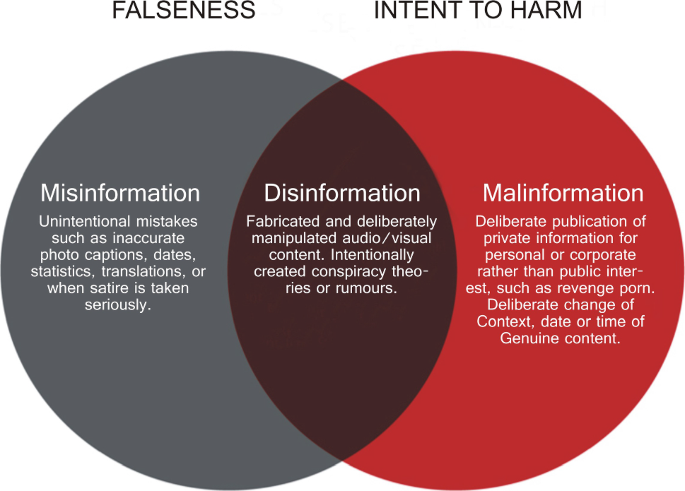Types of manipulative content
(Information Disorder)

What is Disinfomation?
Disinformation, also called propaganda or fake news, refers to any form of communication that is intended to mislead. The information in the communication is purposefully false or contains a misrepresentation of the truth. Disinformation can be used by individuals, companies, media outlets, and even government agencies.
Types of Disinformation
- Misleading content, or information and half-truths presented in such a way as to place a person or an issue in a negative light.
- Imposter content, or information from a source that deliberately impersonates a known and trustworthy source.
- False content, where legitimate, truthful content is mixed with intentionally false content to give credibility to the false content.
- Fabricated content, or information that is composed completely of information the source knows to be false.
- False connection, or information that implies something in a headline, photo, video clip, or caption that is not a fair representation of the body of the article or other content.
- Manipulated content, or content that is intentionally altered to create a false impression. An example is photo-shopping an individual into a photo at an event where he or she was were not present.
Quoted from: Ungvarsky, J. (2020). Disinformation. In Salem Press Encyclopedia. Salem Press.